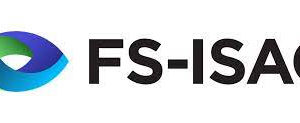IAEA Tool for Self-Assessment of National Nuclear and Radiation Safety Infrastructure Now Available Online
The IAEA has launched a web-based version of its self-assessment tool — eSARIS — with additional features and advanced functionalities to support Member States in assessing their nuclear and radiation safety framework, to either strengthen the national regulatory infrastructure or in preparation for an IAEA Integrated Regulatory Review Service (IRRS) mission.
“eSARIS allows multiple users across different organizations in a Member State to work together more effectively, as they can view and edit information simultaneously,” said Teodros Hailu, IAEA Radiation Safety Specialist and eSARIS technical officer. “Users can also use charts to monitor their self-assessment progress and the new tool provides the opportunity of tracking changes made to information provided.”
eSARIS is a new version of the IAEA Self-Assessment of Regulatory Infrastructure for Safety (SARIS). SARIS was originally launched in 2013 and is regularly updated in line with the development of IAEA safety requirements. eSARIS now provides users with easy and secure online access, and acts as a shared online platform for all users within a country.
The SARIS methodology, used by staff of regulatory bodies, technical services provider organizations, facilities using radiation sources and government entities, is based on a structure of questions that promotes the objective evaluation of current safety framework, processes and related activities, and enables Member States to devise a continuous improvement plan for their national safety infrastructure.
Conducting self-assessment using SARIS is a preparatory requirement for IAEA Integrated Regulatory Review Service (IRRS) missions, a peer review service of regulatory framework for Member States to strengthen and enhance the effectiveness of their regulatory infrastructure.
User-friendly features
The new eSARIS was developed in response to feedback from Member States and allows regulatory bodies to modify the scope of their self-assessment. Since it is accessed via the IAEA Nucleus system, existing Nucleus account holders will benefit from single sign-on, while eSARIS also guarantees users a high level of restricted access and security.
Isabel Villanueva Delgado, Head of the General Secretary’s Cabinet at the Spanish Nuclear Safety Council (CSN), who was involved in the development stage of the tool, said: “eSARIS systematically guides on how to implement the self-assessment plan; organize roles and responsibilities; develop an action plan for improvement in line with updated IAEA safety standards; and create a repository of information and evidence, which could prove beneficial in the short and long term.”
Richard Ndi Samba, Director of Regulation and Regulatory Control at the National Radiation Protection Agency (NRPA) in Cameroon and also involved in the development process, added that “the updated tool provides an easy interface to communicate with IAEA technical officers, which allows country counterparts to quickly identify areas of performance improvement.”
eSARIS also includes other components, such as the Integrated Review of Infrastructure for Safety (IRIS) tool, which provides for a comprehensive and targeted self-assessment in line with the IAEA Specific Safety Guide SSG-16 (Rev. 1) on the establishment of a national safety infrastructure for a nuclear power programme.





